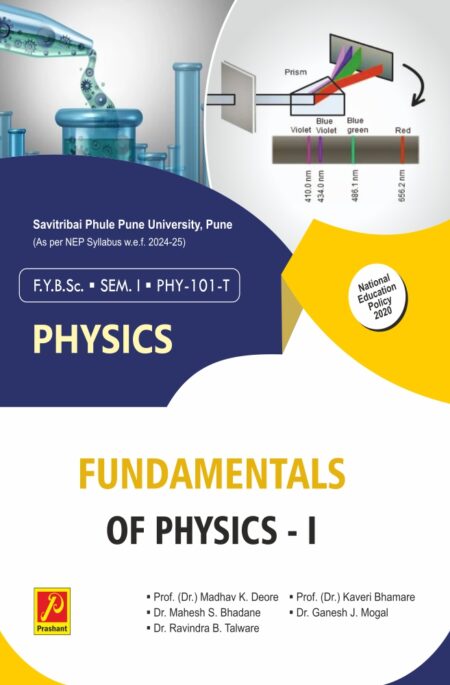Fundamentals of Physical Geography
F.Y.B.Sc. | SEM. I | Geography | GEO-101 (T)
Authors:
ISBN:
₹170.00
- DESCRIPTION
- INDEX
The present textbook is written on the syllabus of F.Y.B.Sc. Semester I (Geography) of the Savitribai Phule Pune University, Pune. It gives us a great pleasure to hand over the book to the students and teachers. We hope students and teachers will welcome this book by heart. The entire book is prepared on computer. All figures in the book are drawn on computer by Prof. Dr. Kiran Gavit under the guidance of Prin Dr. S. R. Chaudhari, therefore, the book has become more illustrative and informative. Most of all important points are explained by figures. This is the special feature of this book. There are in all more than 50 figures. As the figures are drawn by the authors themselves, the content displayed in the figures is more precise and accurate. The entire text is arranged in such way that the students can perceive the knowledge of Physical geography very easily. Another special feature of this book is the exercise given at the end of every chapter. In this part we have tried to ask large number of objective and long answered questions. This will help to the students for preparing themselves for all examinations at all levels.
Physical geography comprises important branch of Geography. It is studied in all universities and even is a subject for M.P.S.C., U.P.S.C., NET, SET examinations. We hope the present book will be helpful to the students preparing for such examinations.
1. Introduction to Physical Geography
Meaning, Definitions and Introduction to Geography
Definitions and Introduction to Physical Geography
Nature and Scope of Physical Geography
Development of Physical Geography
Branches of Physical Geography.
2. Interior of the Earth
Sources of information about the Interior of the Earth
Behavior of seismic Waves
Three types of Seismic Waves
Characteristics of Seismic Waves
Composition and layers of the interior of the Earth
3. Wegener’s Continental Drift Theory
Introduction
Wegener’s Theory
Pangea and Panthalasa
Laurasia and Gondwanaland
Movement of Landmasses
Wandering of Continents from the Poles
Mountain Building
Evidences in support of the continental Drift
Objections against Wegener’s Continental Drift Theory
4. Composition and Structure of Atmosphere
Elements of Weather and Climate
Composition of Atmosphere
1) Permanent Gasses
2) Other permanent minor gasses
3) Particles in the Atmosphere
Structure of Atmosphere
A) Structure of Atmosphere on the basis of Chemical Composition
B) Structure of Atmosphere on the Basis of Physical Properties
C) Chemical Structure of the Atmosphere
D) Ionic Structure of the Atmosphere
5. Insolation and Temperature
NSOLATION
Definitions of Insolation
Solar Constant
Factors affecting the Distribution of Insolation
TEMPERATURE
Heating and Cooling of Atmosphere
Distribution of Temperature
(A) Horizontal Distribution of Temperature
Factors Affecting the Distribution of Temperature
(B) Vertical Distribution of Temperature
Normal Lapse Rate, Inversion of Temperature, Mean Temperature,
Range of temperature, Isotherm
6. General Structure of Ocean Floor
Continental Shelf
Continental Slope
Deep Sea Plain or Abyssal Plain
Oceanic Deeps or Trenches
Mid-Oceanic Ridges or Submarine Ridges
Significance of Oceanic Relief
7. Movements of Ocean Waters : Tides
Definitions
Tide Producing Forces
Why are the tides varying in heights?
Time of Tides
Types of Tides
1) Spring Tide 2) Neap Tide 3) Apogean and Perigean Tides 4) Diurnal and Semidiurnal Tides 5) Tidal Bores Economic significance of tides









